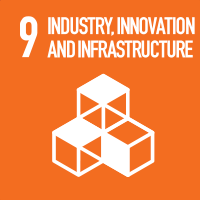Studying at the University of Verona
Here you can find information on the organisational aspects of the Programme, lecture timetables, learning activities and useful contact details for your time at the University, from enrolment to graduation.
Study Plan
This information is intended exclusively for students already enrolled in this course.If you are a new student interested in enrolling, you can find information about the course of study on the course page:
Laurea in Informatica - Enrollment from 2025/2026The Study Plan includes all modules, teaching and learning activities that each student will need to undertake during their time at the University.
Please select your Study Plan based on your enrollment year.
1° Year
| Modules | Credits | TAF | SSD |
|---|
Mathematical analysis 1
Computer Architecture
2° Year activated in the A.Y. 2023/2024
| Modules | Credits | TAF | SSD |
|---|
3° Year activated in the A.Y. 2024/2025
| Modules | Credits | TAF | SSD |
|---|
1 module among the following| Modules | Credits | TAF | SSD |
|---|
Mathematical analysis 1
Computer Architecture
| Modules | Credits | TAF | SSD |
|---|
| Modules | Credits | TAF | SSD |
|---|
1 module among the following| Modules | Credits | TAF | SSD |
|---|
Legend | Type of training activity (TTA)
TAF (Type of Educational Activity) All courses and activities are classified into different types of educational activities, indicated by a letter.
Network programming and security (2024/2025)
Teaching code
4S003184
Credits
6
Language
Italian
Scientific Disciplinary Sector (SSD)
INF/01 - INFORMATICS
Courses Single
Authorized
The teaching is organized as follows:
Teoria
Laboratorio
Learning objectives
The course aims to provide knowledge in three areas: programming of network applications, configu- ration and management of a network and its equipment, basic concepts on the security of computer systems in the network. At the end of the course the student will have to demonstrate knowledge and ability to understand the functioning of the networks, the applications that use them and the basics of security; to have the ability to apply the acquired knowledge and skills to design network applications, to design simple secure networks and to configure the related equipment; to know how to choose the most appropri- ate protocol for each communication service contained in the designed application; to know how to develop the necessary skills to continue the studies independently in the field of communications security.
Prerequisites and basic notions
Knowledge of the fundamental concepts of communication networks and of the protocols of the TCP / IP architecture. Programming in C and Java also via command line interface. Knowledge of relational databases and SQL language. Ability to use the UNIX shell.
Program
- Fundamental concepts of cybersecurity
- Network programming using the socket interface
- Client-server programming
- Basic web programming concepts
- WebSocket
- Webservices
- Network analysis tools
- Evolution of networks
- Configuration of network devices
- Multimedia communications and the problem of quality of service
- The publish/subscribe paradigm and MQTT protocol
- Life cycle of a network application
- Writing parallel programs over the network
Bibliography
Didactic methods
The course comprises lectures and practical computer lessons which represent most of the total hours.
Learning assessment procedures
The exam consists of:
1) oral test on the computer with questions on the theoretical and practical part;
2) an optional development of a project
- individual
- for those who have already passed the oral test, obtaining a score greater than or equal to 25
- effort: 40 hours of work
- to be closed by the end of September
- possible synergies, on request, with other courses, internships, theses
- max score: 3
Evaluation criteria
To pass the exam, students must demonstrate that they:
- have understood the basic principles of network programming and cybersecurity
- are able to present their arguments in a precise and organic way without digressions
- know how to apply the knowledge acquired to solve application problems presented in the form of computer programs.
Criteria for the composition of the final grade
Final grade: score of the oral exam + score of the project (if done)
Exam language
Italiano


